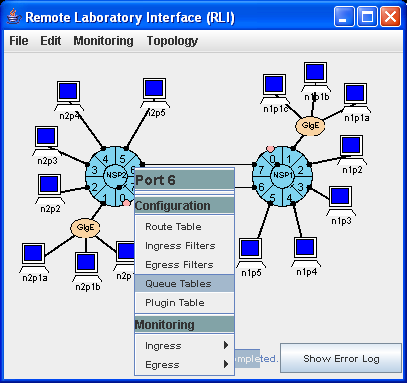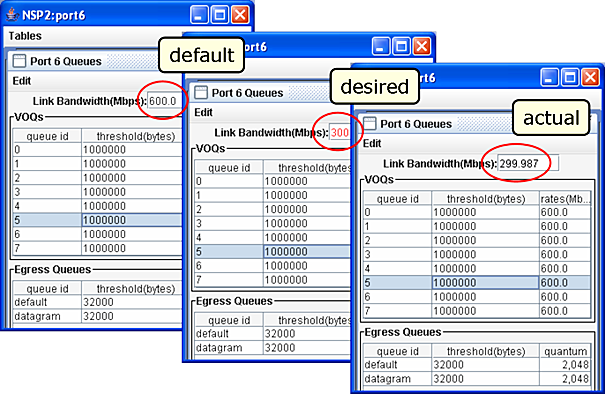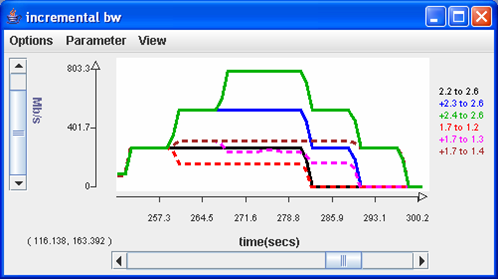| Tutorial >> Filters, Queues and Bandwidth |
|
By default, the capacity of links leaving an egress (output) port are set to 600 Mbps. This link rate can be modified through the Queue Tables menu item at each port (Fig. 1).

In this example, we want to set the link rate to 300 Mbps instead of its default 600 Mbps.

Fig. 2 shows three versions of the Queue Table panel for port 2.6. The leftmost panel shows that the default link bandwidth is 600 Mbps. We have set the desired link bandwidth to 300 Mbps in the middle panel. The actual link bandwidth is 299.987 Mbps (shown in the rightmost panel) after committing. Three comments are in order:
The Port 6 Queues panel in the Tables window shown in Fig. 2 also contains a number of other parameters related to the ingress and egress queues (these parameters will be described later):
The threshold parameter indicates the queue length. For example, the threshold for each of the VOQs is 1,000,000 bytes. All queues use a tail drop discard policy. So, an arriving packet will be dropped if adding it to the queue will exceed the queue threshold.
We set the link rate at port 2/6 to 300 Mbps using the following recipe (Fig. 2):
| Window/Panel | Selection/Entry | Explanation |
|---|---|---|
| Main RLI | Port 2/6 => Queue Tables | Opens Tables window for port 2.6 |
| Port 6 Queues | Link Bandwidth(Mbps): 300 | Define link rate to be 300 Mbps |
| Main RLI | File => Commit | Actually set the link rate |

Fig. 3 shows the effect of reducing the capacity of the 2.6-to-1.7 link rate from 600 Mbps to 300 Mbps. The solid lines show the traffic rates of the UDP flows measured at input ports 2.2 through 2.4. The dashed lines show the traffic rates of the flows at port 1.7 have been reduced to the point where the aggregate rate (the +1.7 to 1.4 curve) is 300 Mbps, the capacity of the bottleneck link (NSP 2's egress port 6).
Fig. 3 shows that at around T = 259, the traffic from port 2.3 is competing with the one from port 2.2, and the total traffic exceeds 300 Mbps. At T = 267, the traffic from port 2.4 starts, and the three flows now compete for the limited bandwidth at port 2.6. But at T = 282, the traffic from port 2.2 stops leaving only two flows to compete for the link.
Revised: Fri, July 20, 2006
| Tutorial >> Filters, Queues and Bandwidth |
|